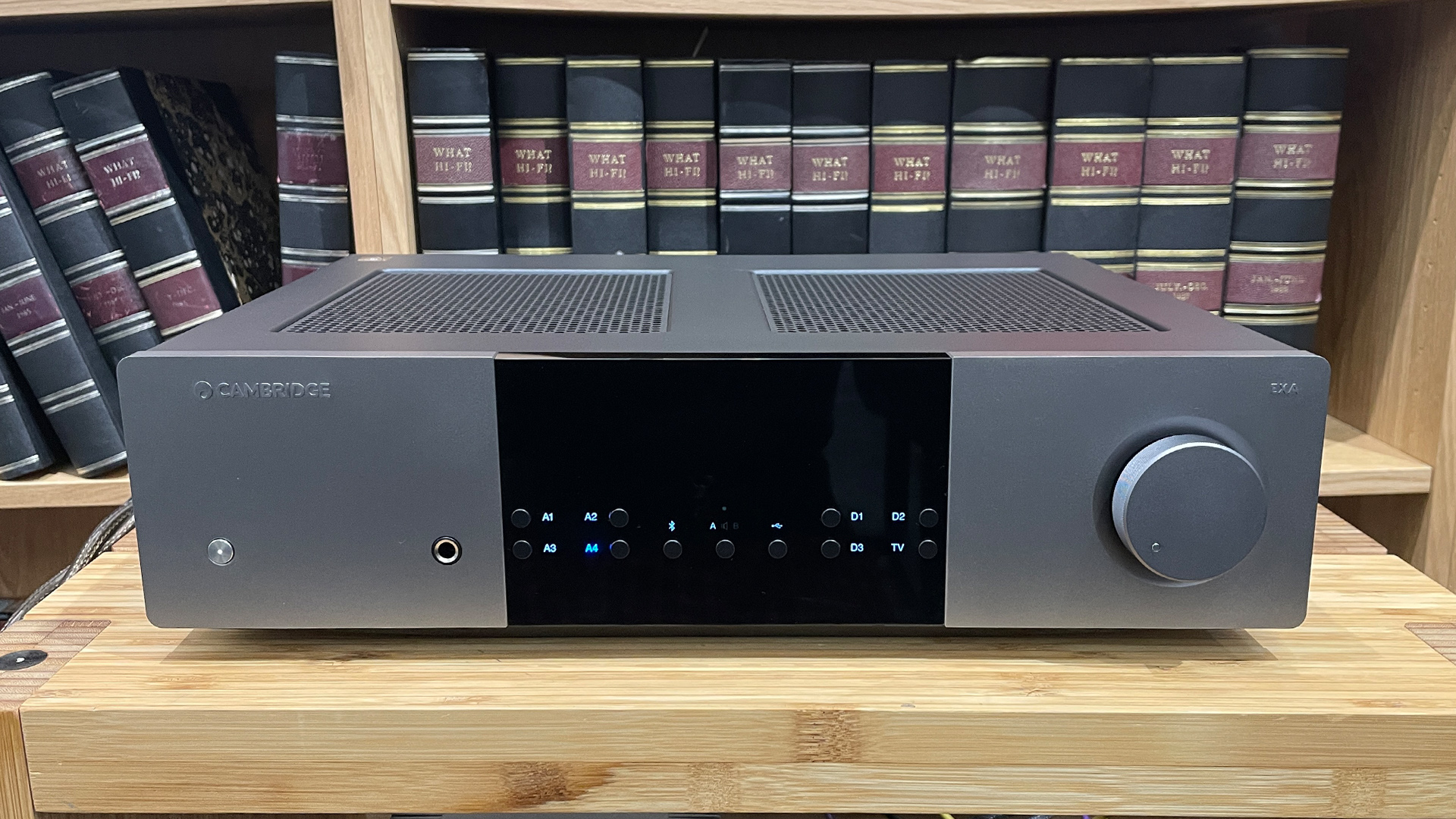What Hi-Fi? Verdict
An impressive, powerful amplifier with generous connectivity and large-scale, refined sound, but it stops just short of troubling the class leaders
Pros
- +
Clean, spacious, powerful sound
- +
Wide soundstage and refined detail
- +
Ample connectivity
- +
Excellent build quality
Cons
- -
Could do with more dynamic subtlety
- -
Rivals offer greater rhythmic drive and transparency
- -
No phono stage
Why you can trust What Hi-Fi?
Cambridge Audio’s new EX Series slots in between its mid-price CX Series and the flagship Edge range, replacing what was once the brand’s previous flagship series, the 851 range.
We’ve heaped plaudits upon the EXN100 streamer – a five-star performer that also won a 2024 What Hi-Fi? Award in the music streamer category – and now it’s the turn of the matching EXA100 integrated amplifier to come under the testing microscope. Will it also follow in the footsteps of excellent amplifiers from the London-based brand?
Build & design
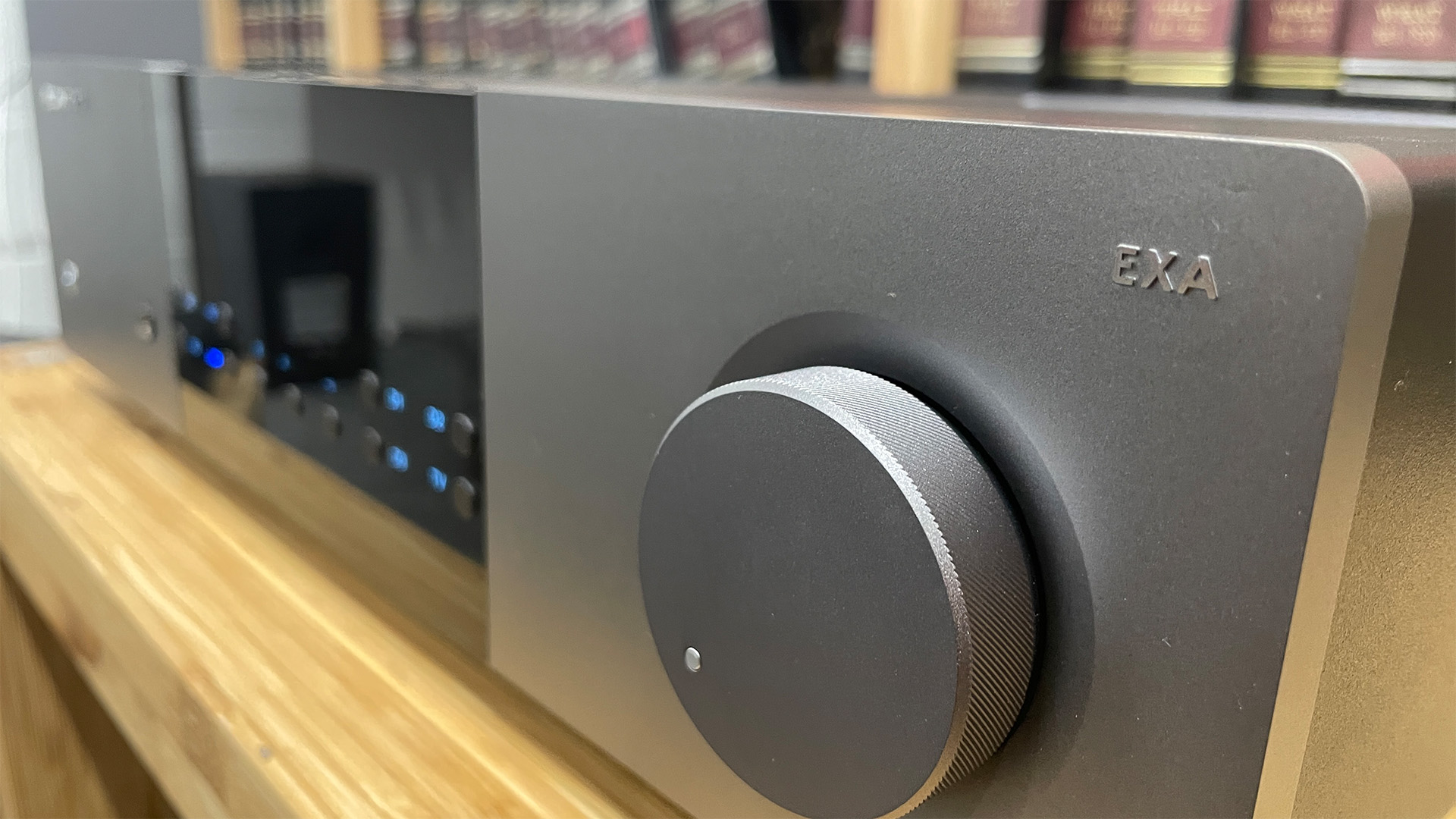
The Cambridge Audio EXA100 integrated matches the EXN100 streamer in design, but is just a couple of centimetres taller. In fact, the EXA100 has the same dimensions as the new CXA81 MkII and previous-gen five-star CXA81 stereo amplifiers, with the same customary ‘lunar grey’ finish and uncluttered look overall.
Where a colour display dominates the front panel of the EXN100 streamer, in the EXA100 this is a large (and somewhat sparse) section that houses buttons and icons for the various inputs. It’s a fairly hefty unit, and overall the amp is well-built with a high-quality feel.
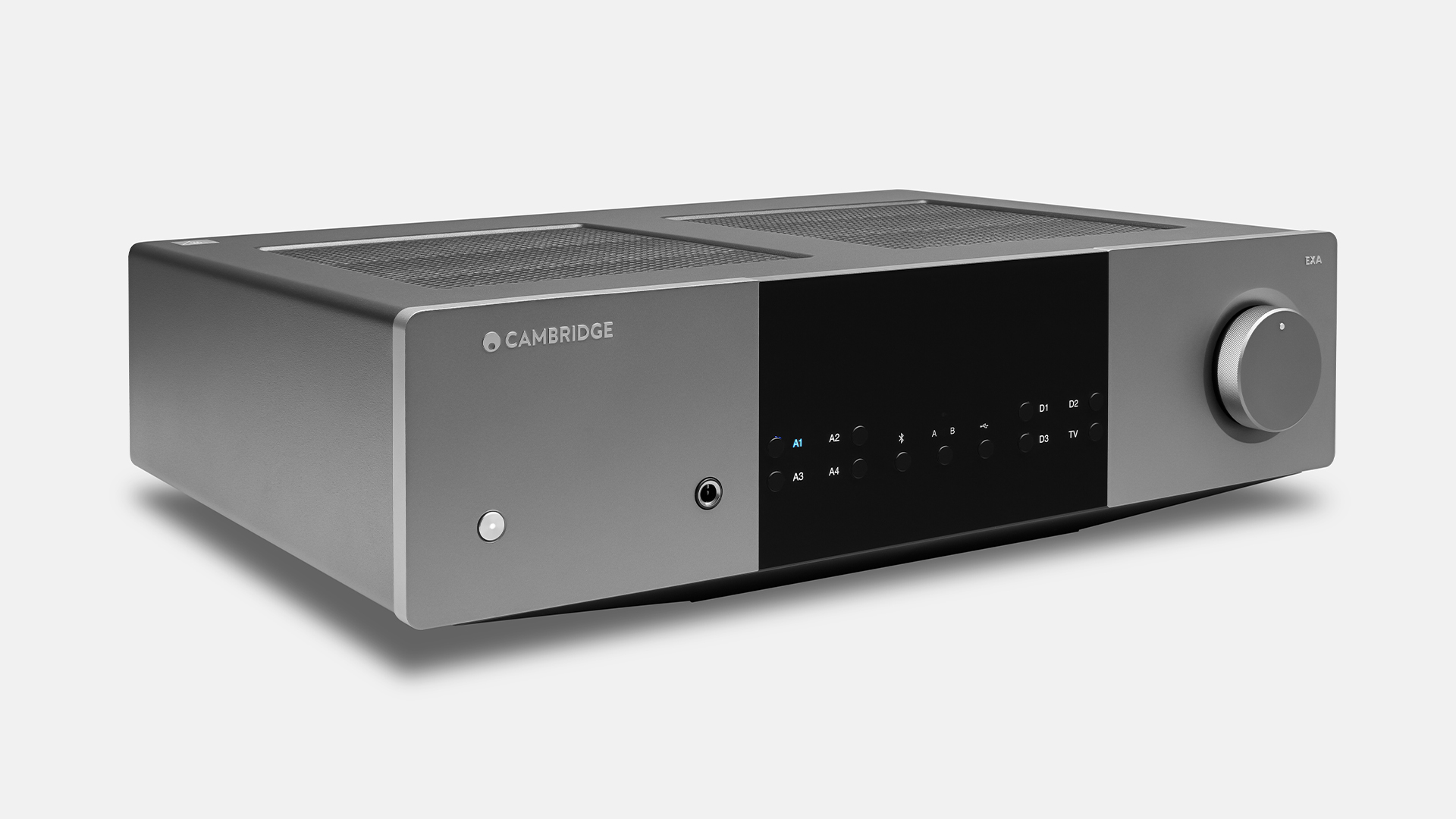
Type Integrated
Power 100W per channel (into 8 ohms)
Phono stage? No
Inputs RCA line level x 4 (including power amp direct x1), balanced XLR, optical x 2, coaxial, HDMI eARC, USB Type B
Outputs Pre-out, subwoofer
Bluetooth? Yes, 5.0 (aptX HD)
Headphone output? Yes (6.3mm)
Dimensions (hwd) 43 x 11.5 x 34.1cm
Weight 12.8kg
Adding to that premium quality is the nicely made volume dial with a knurled finish – it’s lovely to use and works as responsively as the buttons do. The amplifier comes with a well-laid-out remote control that also works well and feels nice to use in hand. All in all, the EXA100 feels like a quality product befitting its price tag.
One detail we really like about the EXA100 is the grilles on top that let you see directly inside to a view that’s dominated by the glinting metal of the heatsinks and huge, shielded toroidal transformer. We think more brands should give us a peep into the internals, especially when they look so impressive.
The EXA100 is powered by a Class A/B circuit that outputs a substantial 100W per channel into 8 ohms. The amp takes inspiration and technology from the Edge M monoblock power amplifier, with Cambridge Audio stating that the EXA100 uses the same power transistors found in its flagship sibling. Cambridge has also taken plenty of care with the internal design of the EXA100, from its grounding to ensuring it is protected against any potential operating issues.
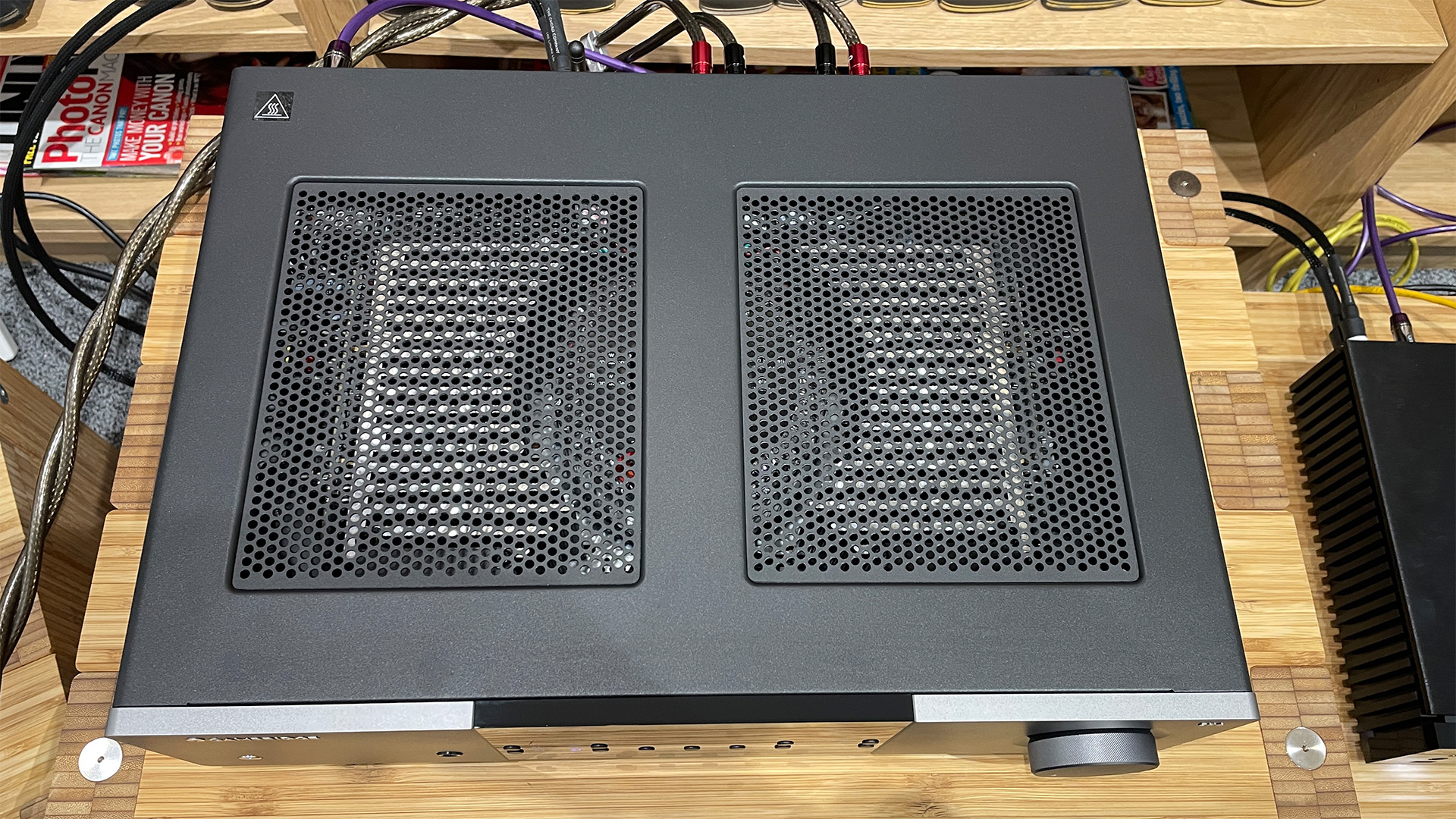
The large toroidal transformer is heavily shielded, runs quietly and is flanked by heavy-duty heat sinks. The brand has also developed its own proprietary protection system called CAP – which is designed to take preventative action if there are any surges in power and temperature, ensuring that the amp and your speakers are protected and last longer.
Features & connections
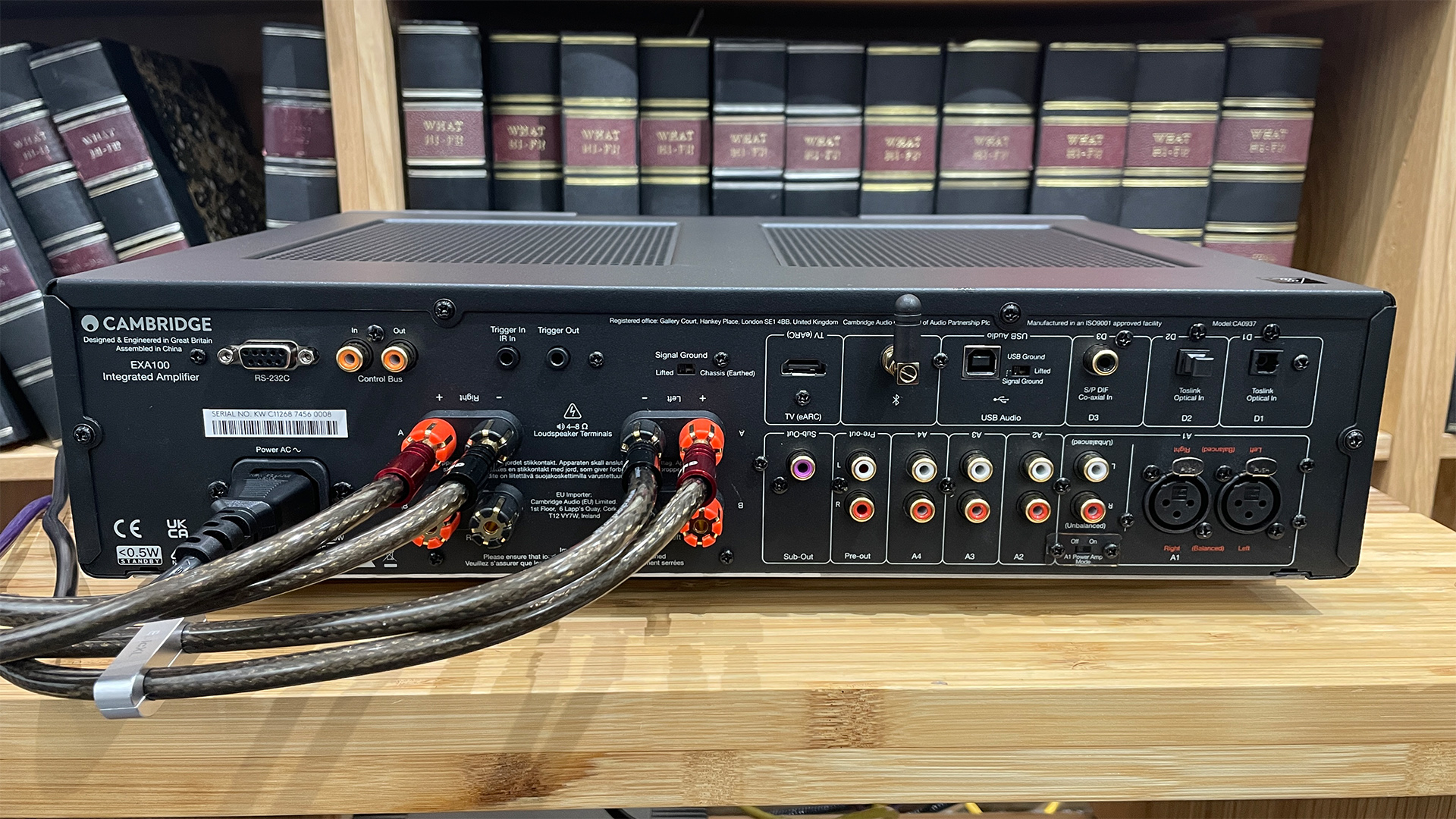
If you are looking for an amplifier heaving with analogue and digital connectivity and multiple ways to plug in your music sources, then the EXA100 should satisfy you. There are three line-level RCA inputs, alongside a fourth RCA pair that can be switched so that the EXA100’s preamplifier section is bypassed, giving direct connection to the power amplifier.
You also get a pair of balanced XLR inputs, and preamp and subwoofer outputs. On the digital inputs side, you get two optical, one coaxial and a USB type B port for plugging in your laptop. The headline feature here is the inclusion of an HDMI eARC input, which is great news for those who want to use the amp as part of their TV set-up.
The EXA100 uses the same ESS ES9018K2M SABRE32 DAC as used in the matching EXN100 streamer and CXA81 MkII amp. The amp can handle hi-res digital audio files, with maximum resolutions of up to 24-bit/384kHz PCM and DSD256 files supported.
As has become customary with Cambridge amplifiers (CX series and above), two sets of speaker terminals are included, giving users the option to bi-wire or power speakers in two different rooms. We particularly like that Cambridge Audio has continued its tradition of having all the input/output labels written upside down, so it’s easier to read the back panel from above.
A 6.3mm headphone jack is also available on the front panel, while Bluetooth is integrated into the amp. It’s a generous set of features; the only real omission from the EXA100 is a phono stage. Cambridge Audio, however, states the amp’s Bluetooth aptX HD codec can be used to wirelessly connect to its own Alva TT range of Bluetooth turntables.
Sound
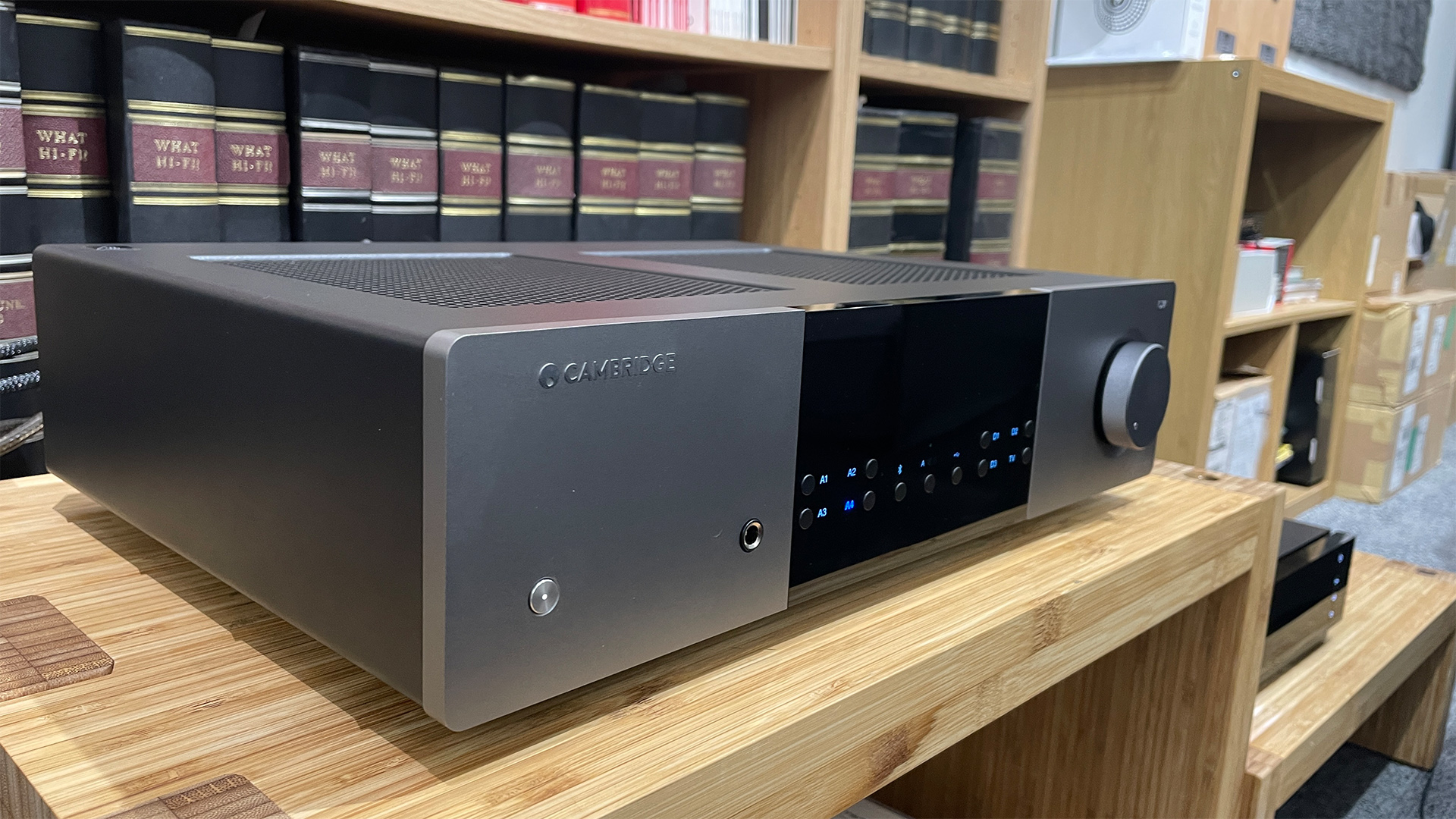
We listen to the EXA100 plugged into our main reference system of the Naim ND555/555 PS DR streamer and ATC SCM50 speakers, as well as a more price-compatible system of Epos ES-7N speakers and Naim Uniti Atom Headphone Edition streamer. Comparisons include Naim’s Nait XS3 (£2499) as well as the cheaper Arcam A15 (£1099).
The EXA100 impresses us straight out of the box with immense scale and presence. There is clarity and refinement in spades, backed with a huge amount of power. The amp is no brawny heavyweight; it just means that songs are delivered with an ease and confidence that’s appealing to listen to. We play through various artists and genres from our music library, and are met with an even-handed, balanced sound that never seems to struggle or fray when pushed hard. In many ways, the amp follows the very same characteristics we’ve heard this year from the CXN100 and the matching EXN100 streamer.
From Fleetwood Mac to Nitin Sawhney, from Dave Brubeck to MJ Lenderman, from Ice T to Kneecap – the Cambridge amp delivers all songs with solid detail and pristine clarity. The crackling of an old recording in the spoken intro of Nitin Sawhney’s Immigrant contrasts neatly against the more immediate soulful, melodic singing that follows – the details are crisp, the edges of notes are definite and voices in particular come through with strong focus. Whack the volume up high and the Cambridge stays composed; overall it’s a smooth listen.
We particularly like just how precisely you can place the instruments and voices in the wide open soundstage. There is ample space for the strings in Agnes Obel’s The Curse to luxuriate, while the positions of all the musicians in Dave Brubeck’s Take Five are clearly plotted and easy to pick out. The amp fills our large 3 x 7 x 5m (hwd) test room comfortably with its large-scaled presentation, and it has no problem driving speakers both large and small during our testing.
Basslines are pulled taut with no ounce of extra fat on them, but while it keeps a steady rhythm, we’d like to hear greater subtlety and drive when it comes to dynamics. The deep, plunging bassline in James Blake’s Limit To Your Love is delivered with composure, but the amp doesn’t quite convey the dramatic plunge into silence and anticipation as we wait for the next note. We also find ourselves constantly fiddling with the volume control to find the right level: too high and some notes (such as the synth intro in ’80s hit Easy Lover) can sound rather bright or hard; too low and we miss the EXA100’s sense of energy and power. We think the way the amp handles low-level dynamics could be improved.
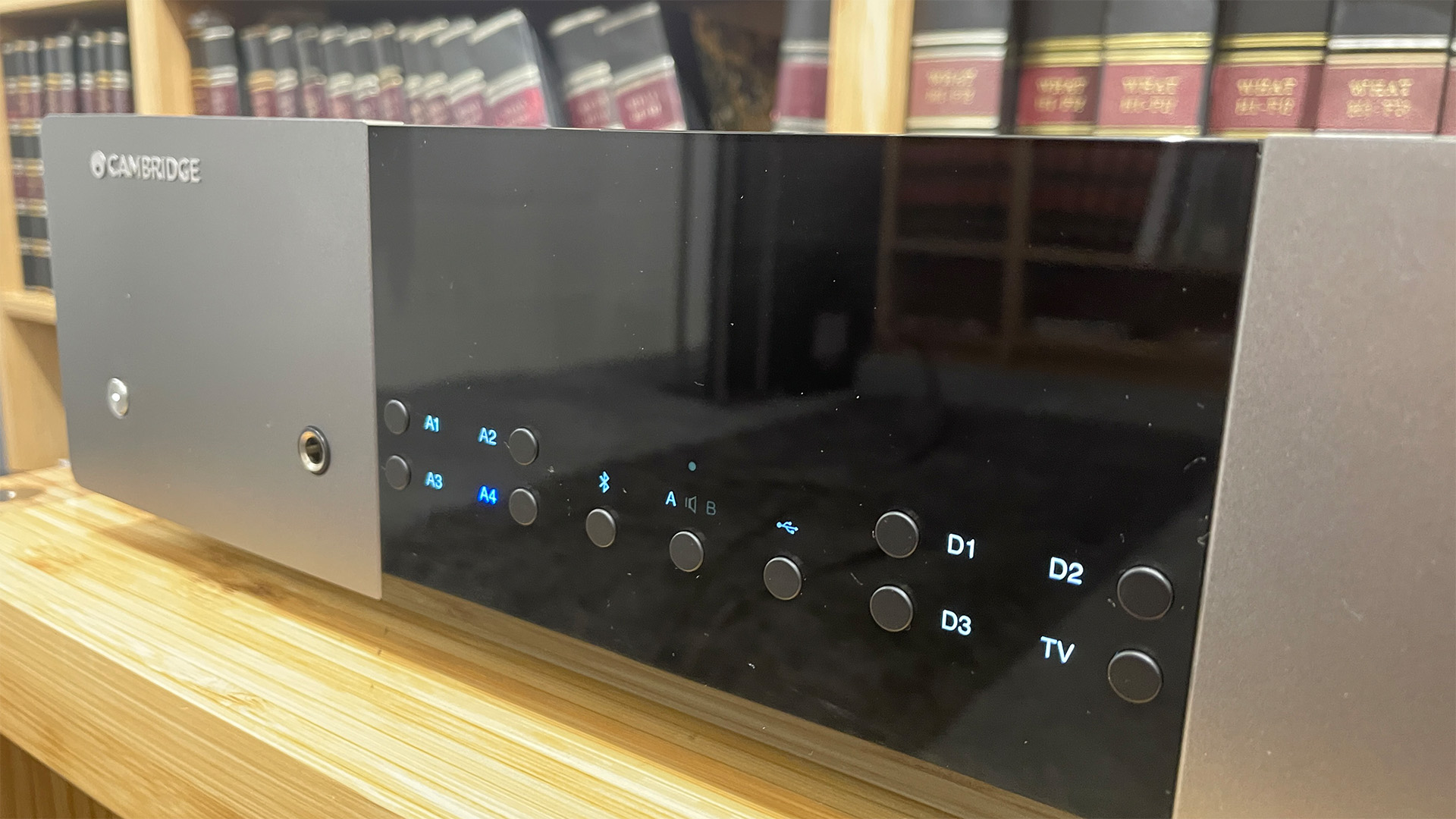
We play through the same songs on the rival Award-winning Naim Nait XS3, and while the Naim can’t quite match the Cambridge’s scale, soundstage width and power, it does get the sense of tension, drama and rhythmic essence of a song across more naturally. The saxophone in Take Five sounds fuller and more shapely, where on the EXA100 it sounds rather thin, while the drumming has more intent and the rhythmic pattern makes more musical sense.
The distinct tactile plucking of the strings in The Curse shines through with incredible clarity with the Cambridge, but we get more of the sense of movement and pressure of the bow pulled across the strings through the Naim. Kneecap’s louche, defiant rapping comes through with greater attitude and appropriate roughness through the Naim; through the Cambridge it’s just a little too polite and polished. We try the cheaper Arcam A15, and while there is a clear drop off in refinement and detail, the Arcam does follow the Naim in delivering the dynamic punch and momentum of a song with more verve and nuance.
There is no doubt that the EXA100 is talented, but we find the best amplifiers at this level put less of their own sonic character on the music, and focus more on revealing the emotion, feel and attitude of a song or an artist’s personality more transparently. There is something just a little restrained about the EXA100’s performance, like it’s holding back in fear of losing control. We think it needs to put its heart on its sleeve more prominently, and – like its superb CXA81 or Edge A amplifier siblings before it – follow the groove of the music being played and deliver a more musically engaging and revealing performance.
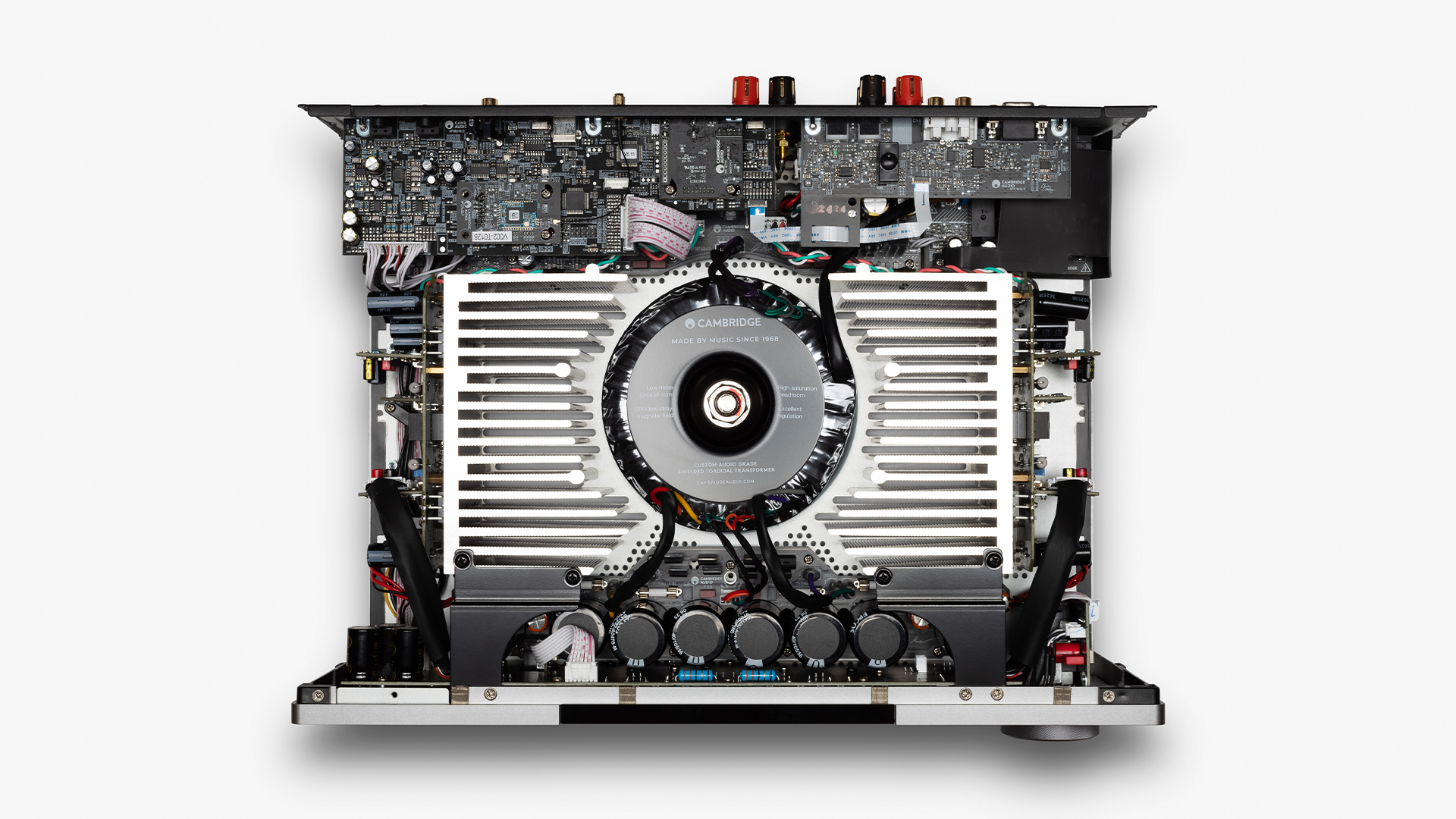
It’s worth noting, however, that the EXA100’s sonic character remains mostly consistent throughout the inputs. We conducted the review mostly using the line level analogue inputs, but switching to the digital input reveals a slightly thinner, leaner sound, although this results in the EXA100 sounding a bit more nimble and agile. Hi-res files played through a MacBook Pro using the USB type B input have the same overall solid, smooth character, while Bluetooth loses too much detail and clarity for our liking.
We plug in a pair of Beyerdynamic Amiron cans and find the headphone stage is of good quality, too, although you do lose out on the Cambridge’s lovely open soundstage, even when wearing open-back headphones.
Verdict
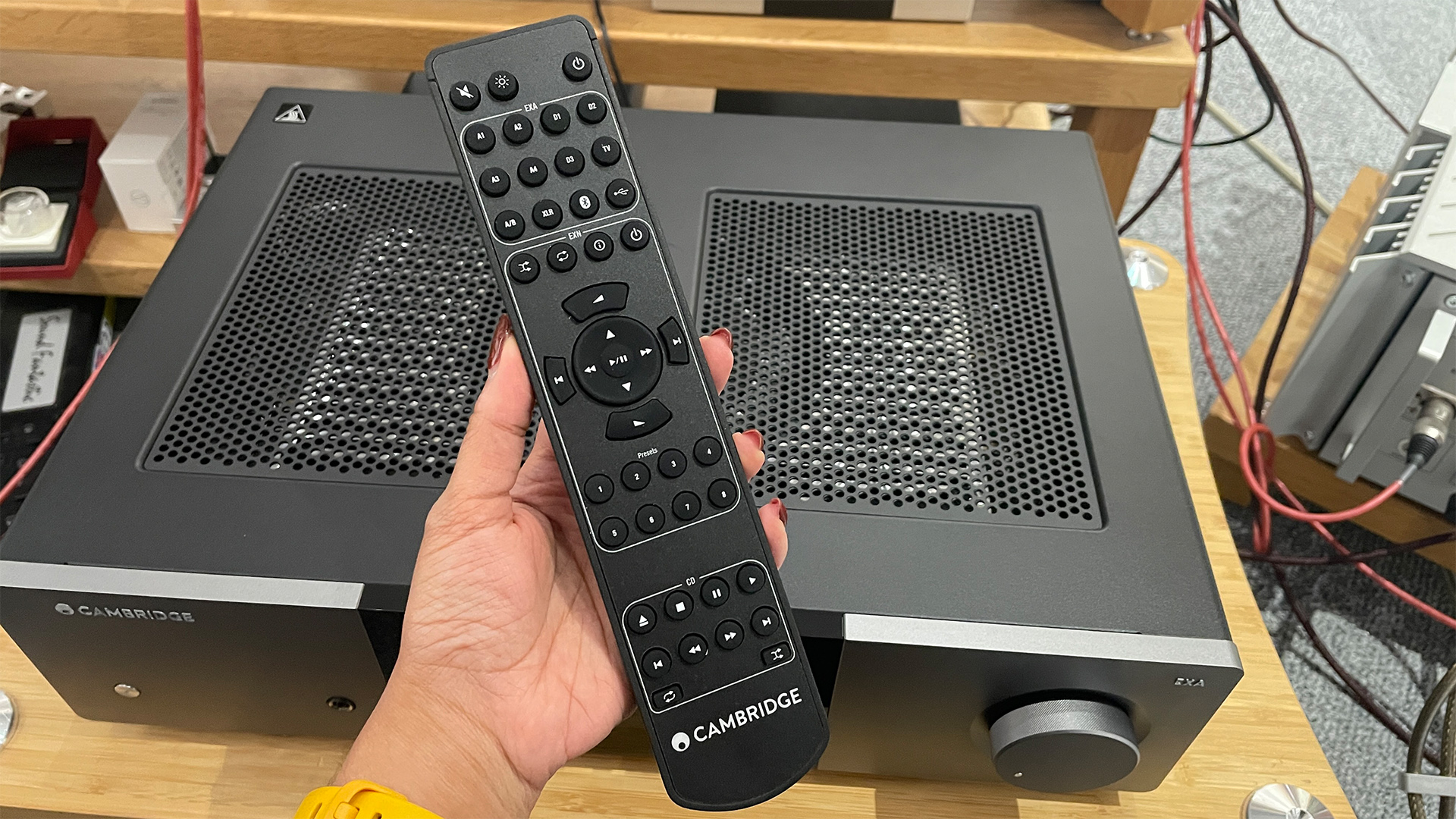
The Cambridge Audio EXA100 is an impressive amplifier in many ways: power, clarity, room-filling smooth sound and a generous feature set that will appeal to many. As a partner for the excellent EXN100 music steamer, it works seamlessly. The competition is strong at this level, however, and there are a few chinks in the amp’s armour that prevent it from getting full marks.
First reviewed: December 2024
SCORES
- Sound 4
- Build 5
- Features 5
MORE:
Read our review of the Naim Nait XS 3
Also consider the Arcam A15
Best stereo amplifiers: 8 class leaders chosen by our review experts
What Hi-Fi?, founded in 1976, is the world's leading independent guide to buying and owning hi-fi and home entertainment products. Our comprehensive tests help you buy the very best for your money, with our advice sections giving you step-by-step information on how to get even more from your music and movies. Everything is tested by our dedicated team of in-house reviewers in our custom-built test rooms in London, Reading and Bath. Our coveted five-star rating and Awards are recognised all over the world as the ultimate seal of approval, so you can buy with absolute confidence.
-
The_Lecht_Rocks Not too sure I am in full agreement….Reply
I’ve upgraded from the CXA81 II and I find the EX much more dynamic in all areas….
Wider, more punch, better grip, headroom expansive….
I B2B’d it with a NAIM SN3 and I found the EX to be more transparent and musical…..
Everyone’s ears are different! -
manicm Replynopiano said:It certainly looks great, to my eyes!
It has the same basic case as the CXA81 Mk2. The dimensions are identical, as are the location of the controls. It's just the facia that's a bit different and maybe the top plate. -
The_Lecht_Rocks Reply
Similar but ever so slightly different. Aluminium front case is nicer quality and a slightly darker hue.manicm said:It has the same basic case as the CXA81 Mk2. The dimensions are identical, as are the location of the controls. It's just the facia that's a bit different and maybe the top plate.
The volume control is more solid and also feels like knurled aluminium.
The top vent and cutout nice into the transformer.
It’s also more tall than the CXA
